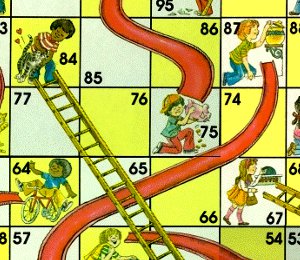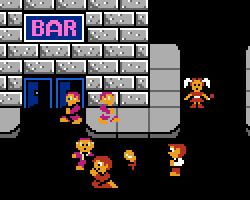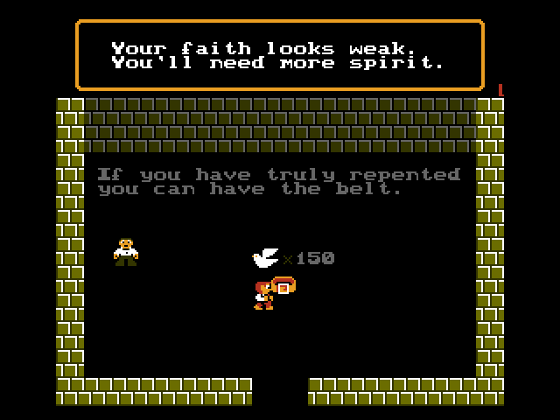We often treat serious games as a relatively recent or unexpected development. Certainly there is still a fair amount of hype about the potential practical uses of videogames, particularly in the realm of education. While such discourses of progress and potential are certainly not unfounded, it is important to remember that games (including videogames) have always been about more than leisure. The first game console was originally pitched as a “low-cost data entry device” created by a defense contracting company (Halter, 2006). Many other early videogames were conceived as (or at least justified as) training simulators, public relation tools, and other practical devices for use by the military. Looking further back, tabletop wargames had their roots in officer training exercises like Kriegsspiel, and Go may have originated from divination practices to predict the outcome of battles (Fairbairn, 2007).

While military instruction is certainly a very common theme, games were historically used for moral instruction as well. One of the best examples of this is the game Snakes and Ladders, which originated in India as gyān chaupar (Topsfield, 1985). The game, like many contemporary games in India, was a race game, with players competing to reach the final square first. The twist in gyān chaupar is that progress was not always linear. Rather, a player could be advanced forward or sent back by landing on either a ladder or a snake, respectively. Climbing a ladder represented the rewards of virtue, while being pulled down by a snake represented the consequences of vice.
The moral rhetoric of gyān chaupar operated on a number of levels. On a basic, textual level, each ladder was labeled with a virtue, such as compassion, knowledge, or asceticism, while the snakes were labeled with vices such as vanity, desire, and murder. This message was often backed up with visual rhetoric, such as by a drawing the animal you would be reincarnated as at the bottom of one of the board’s snakes (Grunfeld, 1975). As a games researcher, however, I am most interested in how the game’s rhetoric of morality and life is conveyed procedurally.
Andrew Topsfield, who has written on the evolution of gyān chaupar from the earliest found artifacts to the present, called it a “paradigm of capricious fate or the ups and downs of human life” (Topsfield, 2006). Indeed, “fate” is central to playing the game, as players’ pieces progress with the roll of the dice, essentially independent of player choice. While the choices available to the player are usually central to to understanding the underlying rhetoric of a game, the lack of choices is equally important. In gyān chaupar, the player has no input beyond casting the dice and accepting the result. While the visual and textual rhetoric stresses the importance of following the path of virtue and avoiding the pitfalls of vice, the underlying procedurality of the game reminds the player that we are ultimately subject to the whims of fate, and we have to accept the “ups and downs of human life.”

Gyān chaupar remained popular in India for centuries and managed to adapt and spread through Hindu, Jain and Muslim cultures. During the British colonial period, the game migrated to Great Britain as well, bringing with it the tone of moral instruction that it had maintained over the centuries. Early English editions of the game replaced the religious values found in the Indian versions with the social mores of Victorian society. Over time, the game became more oriented toward children and the depiction of virtues and vices began to fade, though the instructive nature of the game remained. It eventually came to depict the rewards of well-behaved children and the consequences of misbehaving. The exact behaviors depicted in the game varied from edition to edition, but each game portrayed the same cause-and-effect logic that was present in many of the early Indian versions of the game (although admittedly some examples, like a girl who wastes her food being reduced to a homeless flower peddler, stretch the plausibility of these relationships).

Though considerably less prevalent than in the nineteenth century, games designed with moral instruction as a main component continued to be made, including videogames. One interesting example is the game Spiritual Warfare, an unlicensed game created for the original NES. Like gyān chaupar, it is meant to instruct on a number of levels. On a textual level, the game contains a number of segments that involve Bible trivia, presented in multiple choice format. Visually, the game draws heavily from games like The Legend of Zelda, setting up a basic frame of reference for the player. Instead of a fantastic setting with monsters and magic, Spiritual Warfare is set in a more mundane (but apparently no less dangerous) modern city. The monsters of Zelda are replaced with “unsaved souls” that range in appearance from misbehaving children to criminals in striped prison uniforms. Upon defeating or “converting” these enemies, they are briefly transformed into well-groomed men, kneeling in prayer, before disappearing from the screen. Stereotypical images of white angels and red demons also figure prominently into the visual design of the game.
Like the graphics, the gameplay is also very Zelda-inspired, with a great deal of exploration and item acquisition. Defeating enemies earns you “spirit points,” the currency of the game. These points are also earned through exploration and through correctly answering Bible trivia. Like the numbers on the squares of a gyān chaupar board, the amo
unt of spirit points the player holds is meant as a measure of holiness. Also as in gyān chaupar, there are pitfalls that can cost the player her hard-earned points. Rather than an unfortunate landing on a snake, the player in Spiritual Warfare is penalized for entering forbidden areas, a downtown bar and a casino, take a look how to play slots games in this page https://www.goal55.id. Upon entering one of these buildings, the player is punished by having an important item confiscated by an angel. The item is only returned in exchange for a large amount of spirit points (oddly, the angel makes you buy it back from a pawn shop in the slums), requiring the player to start gathering them again for scratch.

Since the snake mechanic from gyān chaupar and the pawn shop mechanic in Spiritual Warfare have a great deal in common both thematically and procedurally, it is interesting to compare the two. Both represent a way of quantifying holiness and the loss thereof. Unlike hitting a snake, which is all but unavoidable and relies merely on the roll of the dice, losing your gear to the pawn shop is easily avoidable. Both the bar and the casino have a “Christian helper” standing outside to warn the player away. There are no in-game benefits for entering these forbidden locations and (unlike some other parts of the game) it is unlikely that the player will be accidentally knocked through the doorway. Entering a forbidden location is almost certainly a deliberate act.
While the pawn shop mechanic in Spiritual Warfare privileges choice just as gyān chaupar privileges fate, this raises the question of what kind of choice the player is actually making. Although the limited amount of text surrounding the bar and casino would suggest that the player is choosing to avoid drunkenness and the promise of easy money, neither is represented procedurally in the game. Since the player can’t actually gamble or drink (nor are there any mechanics in the game that would suggest that you could), these aren’t really motivations for entering these taboo locations. In fact, the only real reason for entering these spaces is the game’s Zelda-inspired design. Since one of the genre conventions of adventure games is that exploring is the primary way for the player to progress, the idea of a space that the player shouldn’t explore is counter-intuitive (in this respect the game itself lacks some internal consistency, as the player is punished by entering one casino, yet rewarded with an extra heart for exploring another). Thus, the player’s choice in Spiritual Warfare is less about choosing virtue over vice and more about choosing to favor the diegetic guidance of in-game characters over the genre conventions that an experienced player would expect in an adventure game.
The effectiveness of games like gyān chaupar and Spiritual Warfare for persuading individuals to make moral decisions is certainly a topic that could be debated. Regardless of how effective these games were as persuasive tools, the fact that games have been used this way both in recent memory and antiquity is something that I find fascinating. Games have always been located at a complicated intersection between leisure and pedagogy, and they probably always will be. If you enjoy playing video games, you might want to try เล่นมากขึ้นอีกที่ UFABET.
References
John Fairbairn, (2007). Go in China.
Frederic Grunfeld, (1975). Games of the world: How to make them, how to play them, how they came to be.
Ed Halter, (2006). From Sun Tzu to Xbox: War and video games.
Andrew Topsfield, (2006). Snakes and Ladders in India: Some further discoveries.
Andrew Topsfield, (1985). The Indian Game of Snakes and Ladders.
[Snakes and Ladders image by Wellcome Images/ Creative Commons Licensed (CC BY-NC 2.0 UK)]
